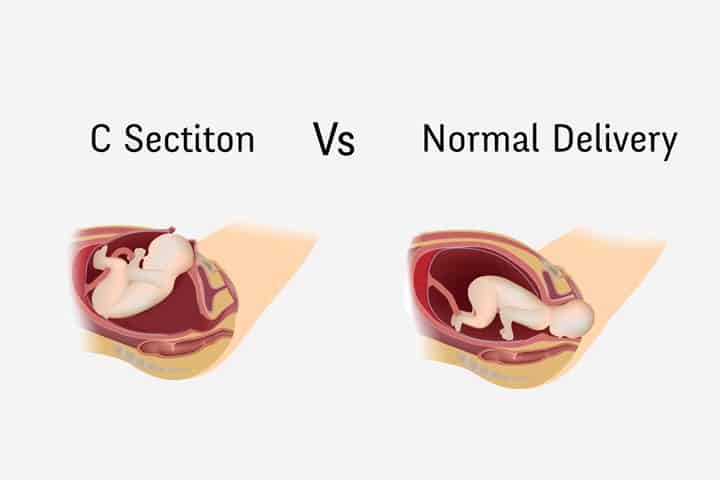Vaginal birth after cesarean (VBAC) is a process in which women who have previously undergone a cesarean section (C-section) deliver their subsequent babies vaginally. While a previous C-section may increase certain risks, many women can safely opt for a successful VBAC under appropriate circumstances. This article aims to provide an overview of VBAC, including eligibility factors, success rates, risks, and considerations for making an informed decision.
Eligibility Factors:
Several factors influence the eligibility for VBAC, including:
- Prior C-section incision type: The type of uterine incision from the previous C-section is a crucial factor. A low transverse incision (horizontal) carries a lower risk of uterine rupture during VBAC compared to a vertical incision.
- Reason for previous C-section: The specific reasons that led to the previous C-section are important considerations. Some conditions or complications that prompted the initial C-section may not be present in subsequent pregnancies, making VBAC a viable option.
- Obstetric history: The number of previous C-sections and overall obstetric history play a role. Women who have previously had a successful VBAC generally have a higher likelihood of achieving VBAC in subsequent pregnancies.
- Availability of resources: The presence of a supportive healthcare provider and a medical facility equipped to handle emergencies is crucial for a safe VBAC.
Risks and Benefits:
VBAC carries both potential risks and benefits, which should be carefully evaluated. Some key points include:
- Success rate: Studies have indicated that VBAC has a success rate ranging from 60% to 80%.
- Risks for the mother and baby: VBAC carries the risk of uterine rupture, although the overall risk is relatively low. This potential complication necessitates access to emergency medical care during labour. However, compared to repeat C-sections, VBAC involves no surgical intervention, fewer surgical complications, shorter hospital stays, and a quicker return to daily activities.

Considerations for Decision-making:
When considering VBAC, it is essential to consult with a healthcare provider who can assess individual circumstances. Factors to consider include:
- Medical history: A thorough review of the medical record, including the reasons for the previous C-section, can provide insights into the suitability of VBAC.
- C-section incision type: The type of uterine scar from the previous C-section, particularly a low transverse incision, generally favours VBAC.
- Pregnancy and delivery factors: Age, the number of previous C-sections, timing since the last birth, and current pregnancy conditions should be taken into account.
- Trial of labour: If VBAC is deemed suitable, a trial of labour after a cesarean (TOLAC) will be planned, with close monitoring and assessment during labour to ensure the safety of both the mother and baby.
Conclusion:
Vaginal birth after cesarean (VBAC) is a viable option for many women who have previously undergone a C-section. Success rates for VBAC are promising, and when conducted under appropriate conditions and with access to emergency care, VBAC can be a safe and beneficial choice. However, individual eligibility and considerations must be thoroughly evaluated in consultation with a healthcare provider to make an informed decision that prioritizes the well-being of both the mother and baby.
Ready for a personalized consultation? Dr. Kausha Shah, an experienced gynaecologist at KK Specialty Clinic & Hospital, is here to help you navigate the journey of Vaginal Birth After Cesarean (VBAC). With her expertise in managing VBAC deliveries, Dr. Shah can provide comprehensive prenatal care, closely monitor your progress, and address any concerns you may have. Schedule a consultation with Dr. Kausha Shah today and explore the possibility of a safe and successful VBAC for your next delivery. Your health and the well-being of your baby are our top priorities.

